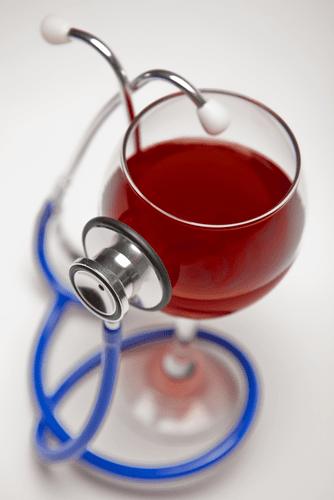PDF The Biopsychosocial Model of Addiction Vivian Gonzalez
White (1996) notes that as a person progresses from experimentation to abuse and/or dependence, he or she develops a more intense need to “seek for supports to sustain the drug relationship” (p. 9). In addition to gaining social sanction for their substance use, participants in the drug culture learn many skills that can help them avoid the pitfalls of the substance-abusing lifestyle and thus continue their use. They learn how to avoid arrest, how to get money to support their habit, and how to find a new supplier when necessary. The LCP considers multiple pathways contributing to disease, at the biological level (genetic/epigenetic) but also emphasizing how social ties influence health behavior and how these accumulate throughout the life course (217). Meanwhile, LCP consider not only how disadvantage impacts health outcomes, but how cumulative advantage can play a role (218). In the case of OUD, social advantage may protect one from stress, or facilitate an individual receiving better treatment.
Stephens (1991) uses examples from a number of ethnographic studies to show how people can be as taken by the excitement of the drug culture as they are by the drug itself. Media portrayals, along with singer or music group autobiographies, that glamorize the drug lifestyle may increase its lure (Manning 2007; Oksanen 2012). In buying (and perhaps selling) drugs, individuals can find excitement that is missing in their lives. They can likewise find a sense of purpose they otherwise lack in the daily need to seek out and acquire drugs. In successfully navigating the difficulties of living as a person who uses drugs, they can gain approval from peers who use drugs and a feeling that they are successful at something. A significant factor in the development and maintenance of addictive behavior is the context in which the behavior occurs.
Mind the dad–A review on the biopsychosocial influences of drug abuse on father-infant interaction
The heritability of impulsivity has been linked to a range of genes known as DAT, MAOA, and COMT (101) suggesting that no single gene can predict impulsivity in humans. More recent data points to loci within the HTR2A gene (encodes a serotonin receptor), casting some doubt on the previously identified candidate loci for impulsive personality traits (102). Importantly, with elevated stress levels there appears to be a cumulative effect http://gasreturn.ru/?page=72 on vulnerability to OUD (103). The concept of reward deficiency syndrome (RDS), introduced by Blum et al. (104), identified the dopamine D2 receptor (assessed by A1 allele) as the primary site for substance-seeking behavior. Interestingly, DAD2 dysfunction has also shown associations with increased risk of PTSD (105). Blum and colleagues created the Genetic Addiction Risk Score (GARS) as a marker for predisposition to RDS (106).
This sense of self is thus an emergent product of the functional relationships that connect self-awareness (a cognitive attribute) to both behavior and the social environment. As an emergent product, agency is not reducible to its individual elements, nor does it operate at the same level. Agency is greater than a simple summation of the personal, behavioral, and environmental factors that contribute to its development and can only be explained by the functional and reciprocal interactions they have with one another. The traditional role of “free https://znanijamira.ru/ms/repairs-and-maintenance/where-calcium-oxide-is-used-calcium-oxide-properties-production-application/ will” in Bandura’s theory is recast as the contribution of personal factors in the constellation of determinants operating within the triadic model. In his model of reciprocal determinism, Bandura argues that behavior, personal factors, and the environment are functionally related to one another (Figure 1A). Changes to the functional relationships between the three components of the model can occur at any point within the model, leading to continually evolving functional relationships between personal factors, the environment, and behavior.
Biopsychosocial Perspective
Psychologists would later argue that this type of selection works primarily at the level of the individual. It is adaptive for both the species and the individual to act in ways that bring pleasure – such as approaching palatable food or a sexually receptive mate. Moreover, it is adaptive at both the species and individual level for the organism to avoid those situations that can cause illness, anxiety, or despair.
Skinner was critical in pointing out the importance of determining the functional relationships that control behavior – particularly those that operate in the environment. Consequently, any explanation of addiction must uncover the functional relationships that control drug use, including those that contribute to its pathological use at the expense of other behaviors. There are several processes that actively contribute to substance use with inputs and outputs on biological and psycho-social levels. One example is drug craving that may be experienced as strong, intense urges for immediate gratification that may impair rational thought about future planning (Elster and Skog 1999). Factors such as drug availability within the environment can increase craving and consequently the vulnerability for relapse (Weiss 2005). Recent research has suggested that enriched environments produce long-term neural modifications that decrease neural sensitivity to morphine-induced reward (Xu, Hou, Gao, He, and Zhang 2007).
Finding Alternatives to Drug Cultures
For instance, many people find the taste of alcoholic beverages disagreeable during their first experience with them, and they only learn to experience these effects as pleasurable over time. Expectations can also be important among people who use drugs; those who have greater expectancies of pleasure typically have a more intense and pleasurable experience. These expectancies may play a part in the development of substance use disorders (Fekjaer 1994; Leventhal and Schmitz 2006). Taken together, neurobiological drivers of OUD should be considered in the context of the current epidemic, and potential solutions ought to look beyond pharmacology alone. It is unknown how a nutrition intervention might modify reward pathways over extended periods of time (i.e., years).

BPS draws its conceptual roots from the general systems theory which originated in the 1950s and aimed to unify knowledge and theories across different disciplines into a systematic vision of a “better world” (21). The BPS model has been promoted by the field of psychosomatic medicine utilizing “mind-body” http://www.balloonhq.ru/forum/forum28/topic2032/messages/?PAGE_NAME=user_list&PAGEN_2=11&PAGEN_1=143 approaches to health (22) that are common in “alternative therapies” (e.g., meditation, acupuncture, nutrition). A central theme with this approach is the use of seemingly divergent conceptual models to emphasize multicausality in understanding disease, rather than a reductionist approach.
It will be important to identify aspects of an individual’s neurochemistry which are modifiable by epigenetic and microbial mechanisms. With such strong evidence of overlapping pathways between drugs of abuse and food (220), it is surprising that food has not been investigated as a long-term modulator of reward pathways in humans. Meanwhile, authors from around the globe have suggested that nutrition interventions may be helpful in combating the opioid crisis (156, 198, 221). Specifically, it would be helpful to measure how nutrition interventions in early recovery can impact the gut microbiome, and how this can affect brain function (e.g., neuroinflammation) and thereby overall chances of recovery. With new measures and specific biomarkers of health status (e.g., allostatic load, microbiome, etc.), the BPS Perspective can be operationalized. This work may end up being conducted under the emerging field of “nutritional psychiatry” (222, 223).

